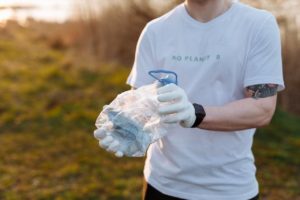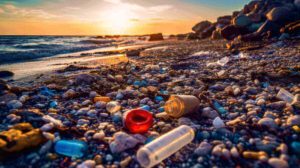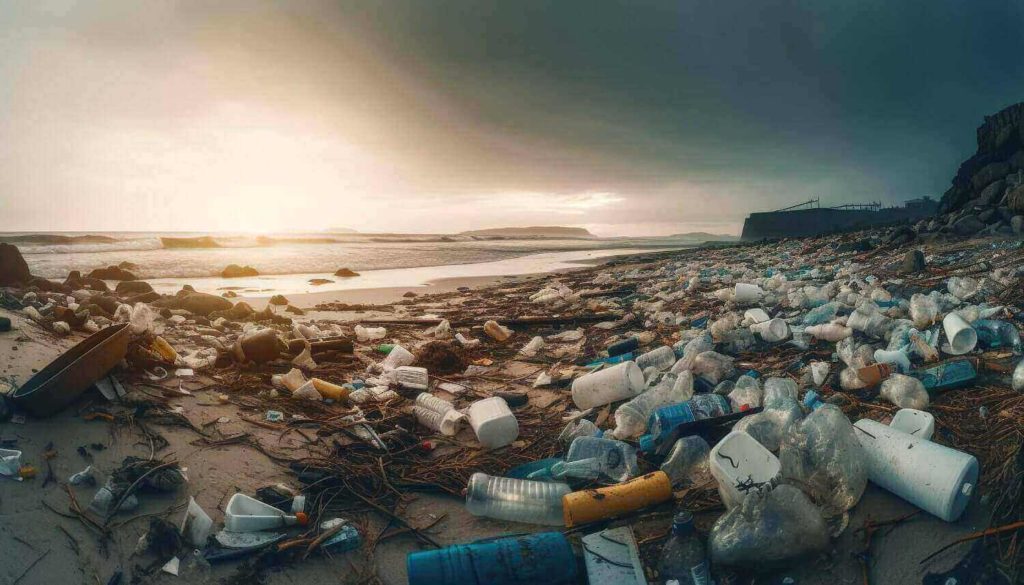We skincare enthusiasts are on our way to save our skin as well as the planet. Recycling plastic bottles has become a popular way for people to reduce their environmental impact. PET (polyethylene terephthalate) plastic bottles, commonly used for skin care products, are one of the most frequently recycled items. You take eco-conscious actions on your part by tossing the bottle of your favorite skincare product after you finish it.
However, the recycling process is not as straightforward as it seems. PET plastic bottles often face issues, such as contamination and technical limitations, which make recycling more difficult. Let’s explore the PET bottle recycling process, the issues associated with it, and what you can do to make a positive impact.
PET Bottle Recycling Process
The PET bottle recycling process is composed of four main stages:

Collection, Sorting, Cleaning, and Manufacturing.
1. The collection process involves the transportation of used plastic bottles to a recycling facility.
2. Upon arrival, they undergo the sorting process where machines separate clear and colored PET bottles and remove contaminants, such as labels and caps.
3. Next, the bottles are cleaned through a series of steps, including shredding, washing, and filtering, to remove any remaining impurities.
4. The raw material obtained is then used in the manufacturing process to create new products or they’re used in the packaging.
Issues with PET Plastic Bottle Recycling
PET bottle recycling faces several challenges that affect its efficiency and effectiveness.
1. Impurities like product residues or other plastics often hinder the recycling process.
2. Collecting PET bottles can be challenging, particularly if it isn’t accessible to a large population or recycling facilities.
3. The technical limitation is another issue where it becomes difficult for recycling facilities to convert certain types of PET plastics. This could be due to differences in the chemical properties of the plastic or specific additives in the product.
4. Lastly, there may also be economic challenges when it comes to recycling PET bottles, where the cost to recycle them may outweigh the profits, leading to less sustainable practices like dumping or exporting.
Although some skincare brands encourage consumers to return empty bottles for recycling, not all brands are committed to the cause.
Impact of PET Plastic Pollution on the Environment
PET plastic bottles, when left to accumulate, have a considerable impact on the environment, society, health, and economy.

Environmentally, they lead to pollution through littering or waste in landfills. Plastics take a long time to degrade, and when exposed to the sun, they release harmful chemicals that seep into the soil and water. These hazardous chemicals can harm wildlife and marine life, leading to extinction.
Socially, PET bottles create areas of plastic waste, leading to unhygienic conditions.
Healthwise, public exposure to these wastes can lead to diseases and infections from the chemicals emitted by the decomposition of such products.
Finally, economically, plastic pollution leads to a loss of revenue arising from clean-up costs, public health expenses, and reduced tourism.
What Can You Do Towards Sustainability?
As consumers, we play a huge role in mitigating PET plastic bottles’ environmental and societal impacts.
One can take a small step by rinsing out the skincare bottles before recycling them.

We can start choosing eco-friendly skincare brands that have sustainable and ethical practices. Lately, a lot of brands have preferred aluminum skincare packaging over plastic.
Encouraging recycling practices in our homes, such as separating and disposing of waste in a more sustainable method, could go a long way.
Furthermore, by holding our favorite brands accountable, we can drive the necessary changes towards sustainable waste disposal and promote stronger sustainability initiatives in our communities.
Conclusion
We can do our due diligence and contribute towards a healthy planet. We’ve a long way to go to undo the effect of decades of plastic waste and now is the time to start. From understanding the bottle recycling process to reducing contamination by properly disposing of waste, we can make a meaningful impact by adopting responsible practices.
We can support PET bottle recycling efforts by choosing eco-friendly skincare packaging alternatives, and recycling practices, and advocating for policy changes. By working together, we can promote a healthier, sustainable future and reduce the impact of plastic waste on our planet!
PET Bottle Recycling FAQ-
How can I ensure my empty skincare bottles are properly recycled?
Thoroughly rinse out your bottles before recycling to prevent contamination and improve the quality of the recycled material.
Do skincare brands use recycled PET in their packaging?
Some skincare brands are committed to sustainability and use recycled materials, but this varies across the industry.
What happens if a PET bottle is not properly cleaned before recycling?
Residues from the original product can contaminate the recycled PET, affecting its quality and usability for new packaging.
Are there skincare brands that actively encourage customers to return empty bottles for recycling?
Yes, some brands have recycling programs that incentivize customers to return empty bottles for proper recycling.


Pingback: Recycled Plastic Does Equal Harm as Single Use Plastic - Wild Oak Skincare